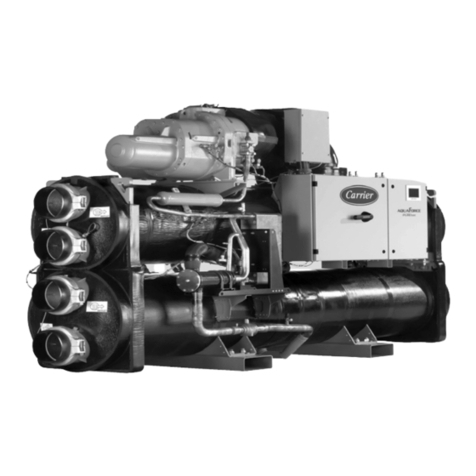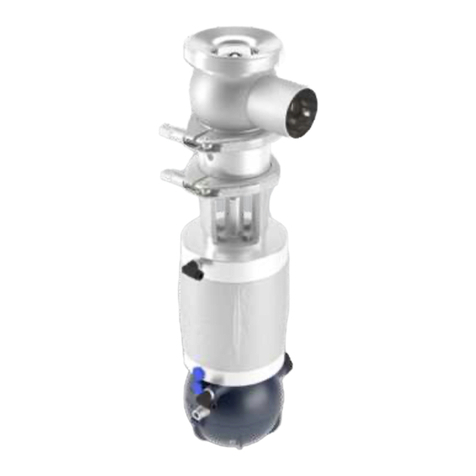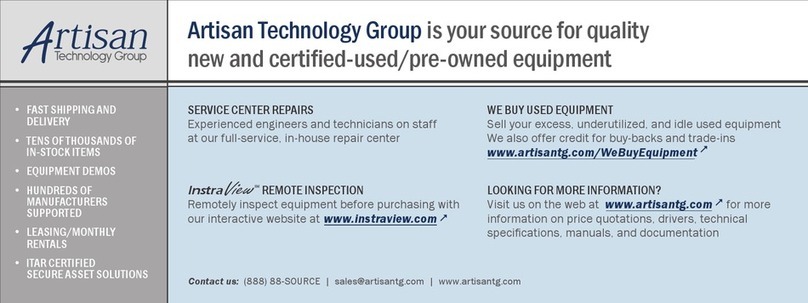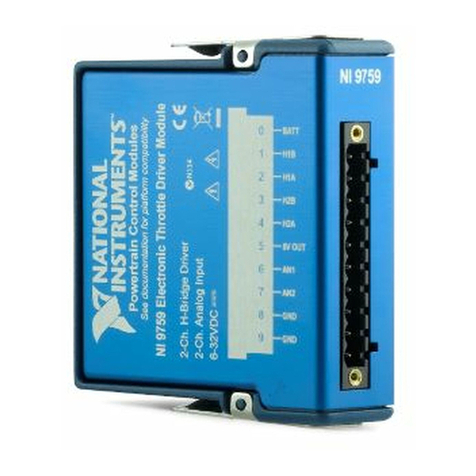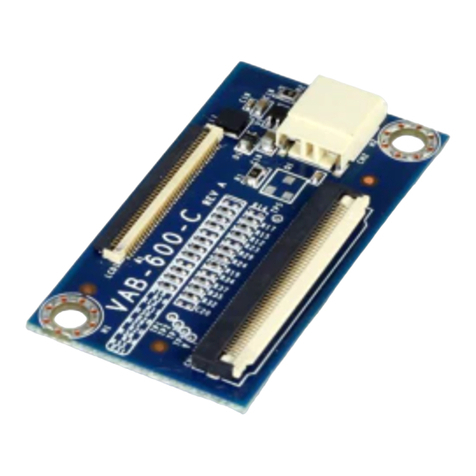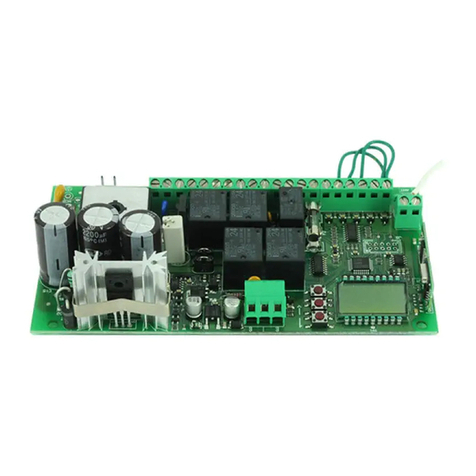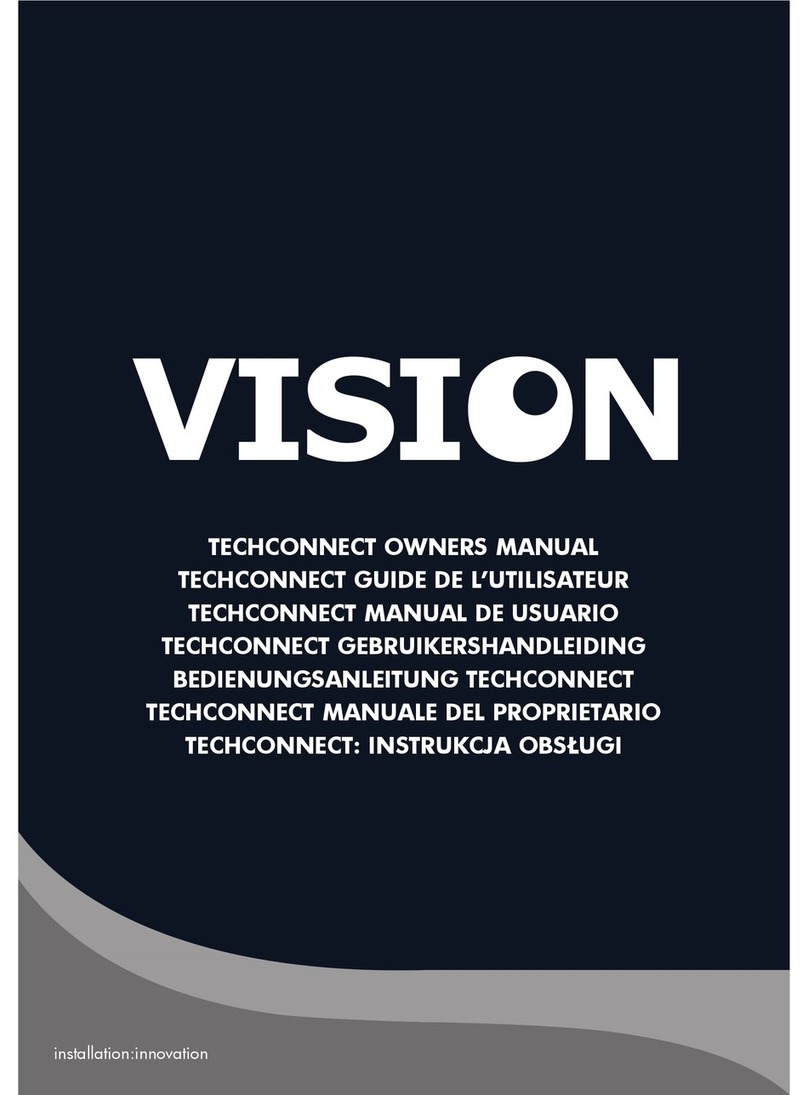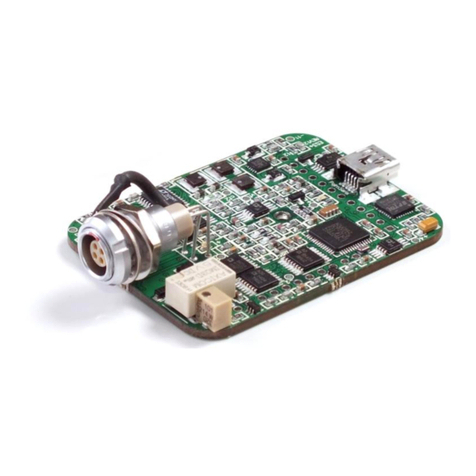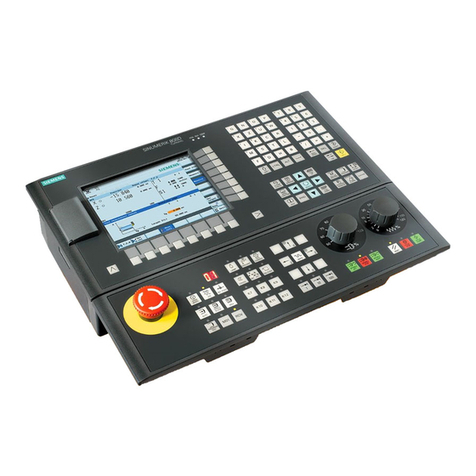Grant GEO360 Assembly Instructions


GEO
360
06/06
1 of 20
The GEO 360 is designed to control the supply water temperature to a wet heating system in order to provide outdoor reset or
setpoint operation. The control uses a floating action mixing valve to regulate the supply water temperature, while protecting the
boiler against short cycling. The control has a Liquid Crystal Display (LCD) to view system status and operating information.
Additional Functions Include:
•
• Quick Setup for easy installation and programming of
control
•
• User comfort adjustment to increase or decrease
building space temperature
•
• Advanced settings to fine-tune building requirements
•
• Boiler Control for improved energy savings
•
• Powered mixing system pump output
•
• Indoor sensor included for room air temperature
control
•
• Test sequence to ensure proper component
operation
•
• Setback input for energy savings
•
• 230 V (ac) power supply
•
• CE Approved

2 of 20
Cleaning...........................................................Pg 13
DIP Switch Settings........................................Pg 13
Quick Setup.....................................................Pg 14
Control Settings..............................................Pg 15
View Menu ..............................................Pg 15
Adjust Menu ...........................................Pg 16
Application ......................................................Pg 17
Error Messages......................................Pg 19
Technical Data ................................................Pg 20
How To Use The Data Brochure
User Interface
The GEO 360 uses a Liquid Crystal Display (LCD) as the method of supplying information. You use the LCD in order to set up and
monitor the operation of your system. The GEO 360 has three push buttons (Item, , ) for selecting, viewing, and adjusting settings.
As you program your control, record your settings in the ADJUST menu table which is found in the second half of this brochure.
Item
The abbreviated name of the selected item will be displayed in the item field of the
display. To view the next available item, press and release the Item button. Once
you have reached the last available item, pressing and releasing the Item button will
return the display to the first item.
Adjust
To make an adjustment to a setting in the control, press and hold all three buttons
(Item, and ) for 1 second. The display will then show the word ADJUST in the
top right corner. Then select the desired item using the Item button. Finally use the
and/or button to make the adjustment.
To exit the ADJUST menu, either select the ESC item and press the
or button
, or leave the adjustment buttons alone for 20
seconds.
When the Item button is pressed and held in the VIEW menu, the display scrolls through all the adjust items in both access
levels.
Additional information can be gained by observing the status field and pointers of the LCD. The status field will indicate
which of the control’s outputs are currently active. Most symbols in the status field are only visible when the VIEW menu is
selected.
User Interface..................................................Pg 2
Description of Display Elements ..................Pg 3
Sequence of Operation..................................Pg 4
Section A: General Operation ..............Pg 4
Section B: Mixing ..................................Pg 5
Section C: Boiler Operation .................Pg 8
Installation.......................................................Pg 9
Electrical Connections..........................Pg 10
Testing The Wiring.................................Pg 12
This brochure is organised into four main sections. They are: 1) Sequence of Operation, 2) Installation, 3) Control Settings, and 4)
Troubleshooting. The Sequence of Operation section has three sub-sections. We recommend reading Section A: General Operation
of the Sequence of Operation, as this contains important information on the overall operation of the control. Then read the sub-
sections that apply to your installation. For quick installation and setup of the control, refer to the Installation section, DIP Switch
Settings section, followed by the Quick Setup section.
The Control Settings section (starting at DIP Switch Settings) of this brochure describes the various items that are adjusted and
displayed by the control. The control functions of each adjustable item are described in the Sequence of Operation.
Table of Contents
Item
Item

3 of 20
Symbol Description
Display
Definitions
The following defined terms and symbols are used throughout this manual to bring attention to the presence of hazards of various
risk levels, or to important information concerning the life of the product.
- Warning Symbol: Indicates presence of hazards which can cause severe personal injury, death
or substantial property damage if ignored.
- Double insulated
- Local level, appliances
INSTALLATION
CATEGORY II
OCC
UNOCC
°C, °F
Pump
Displays when the mixing system pump is in
operation.
Burner
Displays when the boiler relay is turned on.
Occupied Schedule
Displays when the control is in occupied (Day)
mode.
Unoccupied Schedule
Displays when the control is in unoccupied
(Night) mode.
°C, °F
Displays the unit of measure that all of the
temperatures are to be displayed in the control.
Pointer
Displays the control operation as indicated by
the text.
OpenMotor
Speed Close

4 of 20
Sequence of Operation
Section A
General
Operation
Page 4 - 5
Section B
Mixing
Reset
Page 5 - 8
Section C
Boiler
Operation
Page 8 - 9
Section A —General Operation
POWERING UP THE CONTROL
When the GEO 360 is powered up, the control displays the control type number in the LCD for 2 seconds. Next, the software
version is displayed for 2 seconds. Finally, the control enters into the normal operating mode.
OPERATION
The GEO 360 uses a floating action mixing valve to vary the supply water temperature to a wet heating system. The supply
water temperature is based on either the current outdoor temperature, or a fixed setpoint.
Outdoor Reset
When the outdoor design (OUTDR DSGN) setting is not set to OFF, the GEO 360
calculates a mixing supply water temperature based on the outdoor air temperature.
The GEO 360 uses a Characterised Heating Curve and optionally indoor temperature
feedback from an indoor sensor in this calculation.
Setpoint Control
When the outdoor design (OUTDR DSGN) setting is set to OFF, the GEO 360
supplies a fixed mixing supply temperature equal to the MIX TARGET setting. An
outdoor sensor is not required during this mode of operation.
FLOATING ACTION
A floating action actuator motor is connected to the GEO 360 on the Pwr Mix, Opn, and Cls terminals (9, 10 and 11). The
GEO 360 pulses the actuator motor open or close to maintain the correct mixed supply water temperature at the mix sensor
when there is a mixing demand. The actuator is connected to a 4-way mixing valve. A visual indication as to whether the control
is currently opening or closing the mixing valve is displayed in the LCD.
BOILER PROTECTION (BOIL MIN)
The GEO 360 is capable of providing boiler protection from cold
mixing system return water temperatures. If the boiler sensor
temperature is cooler than the BOIL MIN setting while the boiler
is firing, the GEO 360 reduces the output to the mixing valve. This
limits the amount of cool return water to the boiler and allows the
boiler temperature to recover. This feature can only be used if a
boiler sensor is installed.
EXERCISING
The GEO 360 has a built-in exercising function. If the system pump or valve has not been operated at least once every 3 days,
the control turns on the output for a minimum of 10 seconds. This minimizes the possibility of a pump or valve seizing during a
long period of inactivity. The GEO 360 ensures that the mixing valve operates over its entire range at least once each exercising
period. While the control is exercising the Test LED flashes.
Note: The exercising function does not work if power to the control, pump, or valve is disconnected.
SETBACK (UNOCCUPIED)
To provide greater energy savings, the GEO 360 has a setback capability. With
setback, the supply water temperature in the system is reduced when the building is
unoccupied. By reducing the supply water temperature, air temperature in the space
may be reduced even when the thermostat(s) are not turned down. Any time the UnO
Sw (12) and the Com (13) terminals are shorted together, the control operates in the
unoccupied (Night) mode. When in the unoccupied (Night) mode, the UNOCC segment
is displayed in the LCD. The GEO 360 adjusts the supply water temperature based on
the UNOCC settings made in the control. This feature has no effect when the control
is used as a setpoint control.
Decreasing Outdoor Temperature
Increasing Water Temperature
Terminal Unit
(Heat Emitter)
Terminal Unit
(Heat Emitter)
Indoor DesignIndoor Design Outdoor DesignOutdoor Design
Design SupplyDesign Supply
Boiler Supply
Sensor
Mix Supply
Sensor
Boiler Return
Sensor
12
UnO
Sw
13
Com
Timer Switch

5 of 20
FACTORY DEFAULTS
The control comes preset with several factory defaults. These defaults are based on the terminal unit (heat emitter) selection
(see section B2). To fine-tune building requirements, these defaults may be changed. If a factory default value for a terminal
unit (heat emitter) is changed, the terminal unit (heat emitter) number will flash when selected in the ADJUST menu.
To reload the factory defaults listed in section B2, power down the control and wait for 10 seconds. Power up the control while
simultaneously holding the Item and buttons. The terminal unit (heat emitter) number should now be displayed constantly in
the LCD rather than flashing.
MIXING DEMAND
A mixing demand is required in order for the GEO 360 to provide heat. A mixing demand
is generated by applying a voltage between 24 and 230 V (ac) across the Mixing
Demand terminals (1 and 2). Once voltage is applied, the Mixing Demand pointer is
displayed in the LCD. If the GEO 360 is not in Warm Weather Shut Down (WWSD), the
GEO 360 closes the Sys Pmp contact. The GEO 360 calculates a MIX TARGET supply
temperature based on the outdoor air temperature and settings. If required, the GEO
360 operates the boiler in order to provide heat to the mixing valve.
SYSTEM PUMP OPERATION (SYS PMP)
The system pump contact (Sys Pmp, terminal 5) closes whenever there is a mixing demand and the GEO 360 is not in Warm
Weather Shut Down (WWSD). The system pump segment is displayed in the LCD. After the mixing demand has been satisfied,
the GEO 360 continues to operate the system pump for 20 seconds. This allows some residual heat to be purged out to the
heating system. During WWSD, the system pump is operated based on the exercise function.
INDOOR SENSOR
An indoor sensor may be used in order to provide indoor temperature feedback. The indoor sensor is connected to the Com
and Indr terminals (16 and 18). In addition, power must be applied to the Mixing Demand terminals (1 and 2) as described in
the MIXING DEMAND section. With the indoor sensor connected, the GEO 360 is able to sense the actual room temperature.
Indoor temperature feedback fine-tunes the supply water temperature in the mixing system to maintain room temperature. To
adjust the room temperature, use the ROOM OCC or ROOM UNOCC setting in the ADJUST menu at the control.
If a multiple zone system is used with an indoor sensor, proper placement of the indoor sensor is essential. The indoor sensor
should be located in an area which best represents the average air temperature of the zones.
CHARACTERISED HEATING CURVE
When used as a mixing reset control, the GEO 360 varies the supply water temperature based on the outdoor air temperature.
The control takes into account the type of terminal unit (heat emitter) that the system is using. Since different types of terminal
units (heat emitters) transfer heat to a space using different proportions of radiation, convection and conduction, the supply
water temperature must be controlled differently. Once the control is told what type of terminal unit (heat emitter) is used, the
control varies the supply water temperature according to the type of terminal unit (heat emitter). This improves the control of
the air temperature in the building.
MIXING TARGET TEMPERATURE (MIX TARGET)
When used as a mixing reset control, the MIX TARGET temperature is calculated from the Characterised Heating Curve
settings, outdoor air temperature and optionally, indoor air temperature. When used as a setpoint control, the installer sets
the MIX TARGET temperature. The control displays the temperature that it is currently trying to maintain as the mixing supply
temperature. If the control does not have a mixing demand,”– – –” is displayed as the MIX TARGET.
Section B: Mixing
Section B1: General
12
Mix
Demand
24 to 230 V (ac)
Section B1
General
Section B2
Installer
Section B3
Advanced

6 of 20
Section B2: Installer
OUTDOOR DESIGN (OUTDR DSGN)
The OUTDR DSGN is the outdoor air temperature that is the typical coldest temperature
of the year where the building is located. This temperature is used when doing the heat
loss calculations for the building. If a cold outdoor design temperature is selected, the
mixing supply temperature rises gradually as the outdoor temperature drops. If a warm
outdoor design temperature is selected, the mixing supply temperature rises rapidly
as the outdoor temperature drops.
SETPOINT OPERATION (MIX TARGET)
For setpoint control, set the OUTDR DSGN to OFF. The MIX TARGET becomes
the setpoint supply temperature that the control is to maintain. The MIX TARGET
temperature is set by the installer in the ADJUST menu. An outdoor sensor is not
required during this mode of operation.
ROOM OCC & UNOCC (ROOM)
The ROOM is the desired room temperature for the mixing zones, and it provides a
parallel shift of the Characterised Heating Curve. The room temperature desired by
the occupants is often different from the design indoor temperature (MIX INDR). If the
room temperature is not correct, adjusting the ROOM setting increases or decreases
the amount of heat available to the building. A ROOM setting is available for both the
occupied (Day) and unoccupied (Night) modes.
TERMINAL UNITS (HEAT EMITTERS)
When using a Characterised Heating Curve, the control requires the selection of a terminal unit (heat emitter). The terminal
unit (heat emitter) determines the shape of the Characterised Heating Curve according to how the terminal unit (heat emitter)
delivers heat into the building space. The GEO 360 provides for selection between six different terminal unit (heat emitter) types:
two types of underfloor heating, fan heater, fin-tube convector, radiator, and baseboard. When a terminal unit (heat emitter)
is selected, the control automatically loads the design supply temperature (MIX DSGN), maximum supply temperature (MIX
MAX) and minimum supply temperature (MIX MIN). The factory defaults are listed below. To change defaults, refer to section
B3. If a default has been changed, refer to Section A to reload the factory defaults. If using more than one type of terminal unit
(heat emitter), then make a selection based upon the greater number of terminal units (heat emitters) of single type.
Underfloor Heating Screeded (1)
This type of a underfloor heating is embedded in a thick concrete slab. This heating
system has a large thermal mass and is slow acting.
Default values: MIX DSGN = 45°C, MIX MAX = 55°C, MIX MIN = OFF
Underfloor Heating Plated (2)
This type of underfloor heating system is either attached to the bottom of a wood
sub-floor, suspended in the joist space, or sandwiched between the sub-floor and
the surface. This type of heating system has a relatively low thermal mass and
responds faster than a high mass system.
Default values: MIX DSGN = 55°C, MIX MAX = 65°C, MIX MIN = OFF
Fan Heater (3)
A fan heater or air handling unit (AHU) consists of a finned heat exchanger and
either a fan or blower. Air is forced across the coil at a constant velocity by the fan
or blower, and is then delivered into the building space.
Default values: MIX DSGN = 85°C, MIX MAX = 100°C, MIX MIN = 40°C
Decreasing Outdoor Temperature
Increasing Water Temperature
MIX DSGNMIX DSGN
Mix INDRMix INDR
OUTDR
DSGN
OUTDR
DSGN
ColdCold
WarmWarm
Decreasing Outdoor Temperature
Increasing Water Temperature
ROOMROOM
MIX INDRMIX INDR
A
c
t
u
a
l
T
e
m
p
e
r
a
t
u
r
e
N
o
r
m
a
l
D
e
s
i
g
n
TERMINAL UNIT
(HEAT EMITTER)
Underfloor Heating
Screeded (1)
Underfloor Heating
Plated (2)
Fan Heater
(3)
Fin-Tube
Convector (4)
Radiator
(5)
Baseboard
(6)
MIX DSGN 45°C 55°C 85°C 80°C 80°C 65°C
MIX MAX 55°C 65°C 100°C 90°C 85°C 80°C
MIX MIN OFF OFF 40°C OFF OFF OFF

7 of 20
Fin-tube Convector (4)
A convector terminal (heat emitter) is made up of a heating element with fins on
it. This type of terminal unit (heat emitter) relies on the natural convection of air
across the heating element to deliver heated air into the space. The amount of
natural convection to the space is dependant on the supply water temperature to the
heating element and the room air temperature.
Default values: MIX DSGN = 80°C, MIX MAX = 90°C, MIX MIN = OFF
Radiator (5)
A radiator terminal unit (heat emitter) has a large heated surface that is exposed
to the room. A radiator provides heat to the room through radiant heat transfer and
natural convection.
Default values: MIX DSGN = 80°C, MIX MAX = 85°C, MIX MIN = OFF
Baseboard (6)
A baseboard terminal unit (heat emitter) is similar to a radiator, but has a low profile
and is installed at the base of the wall. The proportion of heat transferred by radiation
from a baseboard is greater than that from a fin-tube convector.
Default values:
65°C, MIX MAX = 80°C, MIX MIN = OFF
MIXING INDOOR (MIX INDR)
The MIX INDR is the room temperature used in the original heat loss calculations for the building. This setting establishes the
beginning of the Characterised Heating Curve for the mixing zones.
MIXING DESIGN (MIX DSGN)
The MIX DSGN temperature is the supply water temperature required to heat the mixing zones when the outdoor air is as cold
as the OUTDR DSGN temperature.
MIXING MAXIMUM (MIX MAX)
The MIX MAX sets the highest water temperature that the control is allowed to calculate as the MIX TARGET temperature. If the
control does target the MIX MAX setting, and the MIX temperature is near the MIX MAX, the MAX segment will be displayed in
the LCD while either the MIX TARGET temperature or the MIX temperature is being viewed.
MIXING MINIMUM (MIX MIN)
The MIX MIN is the lowest temperature that the control is allowed
to use as a MIX TARGET temperature. During mild conditions, if
the GEO 360 calculates a MIX TARGET temperature that is below
the MIX MIN setting, the MIX TARGET temperature is adjusted to
match the MIX MIN setting. During this condition, the MIN segment
will be displayed in the LCD when either the MIX TARGET or MIX
temperature is being viewed. If an indoor sensor is used, and the
GEO 360 is operating at the MIX MIN temperature, the system pump
is cycled using Pulse Width Modulation (PWM) with a 15 minute cycle
length. By cycling the system pump and controlling the flow of supply
water, the control provides an average supply water temperature to
the system. This average temperature is equal to the original MIX
TARGET. This minimizes overheating of the zone while the control is
operating at the MIX MIN temperature.
WARM WEATHER SHUT DOWN (WWSD) OCC & UNOCC
When the outdoor air temperature rises above the WWSD setting, the GEO 360 turns on the WWSD segment in the display.
When the control is in Warm Weather Shut Down, the Mixing Demand pointer is displayed if there is a demand. However the
control does not operate the heating system to satisfy this demand. If the control is in setpoint mode, the WWSD feature is not
functional.
Section B3: Advanced
MIX MAX
MIX DSGN
OUT DSGN
WWSD Occ
ROOM Occ
ROOM UnOcc
WWSD UnOcc
99
88
77
66
54
43
32
21
10°C
-29-18-751627
Outdoor Air Temperature
Supply Water Temperature
Mixing Characterised
Heating Curve
Mixing Characterised
Heating Curve
MIX MIN
MIX INDR

8 of 20
BOILER OPERATION
When the GEO 360 determines that boiler operation is required, the Boiler contact terminals (7 and 8) close. While the Boiler
contact is closed, the burner segment in the LCD is displayed.
BOILER MINIMUM (BOIL MIN)
Most boilers require a minimum water temperature in order to prevent flue gas condensation. The BOIL MIN adjustment is set
to the boiler manufacturer’s minimum recommended operating temperature. Only when the boiler temperature is measured
by a boiler sensor can the GEO 360 provide boiler protection. In this case when the boiler is firing and the boiler temperature
is below the BOIL MIN Setting the GEO 360 turns on the MIN segment and reduces the heating load on the boiler by limiting
the output of the mixing valve. If the installed boiler is designed for low temperature operation, set the BOIL MIN adjustment
to OFF.
BOILER PROTECTION
Refer to section A for a description of boiler protection.
BOILER SENSOR ON THE SUPPLY
(Boiler Sensor DIP switch = Supply)
The boiler sensor can be located on the boiler supply if the GEO 360 is the only control that
is operating the boiler. When in the supply mode, the GEO 360 determines the required
operating temperature of the boiler using Boiler Load Reset. With Boiler Load Reset, the
GEO 360 operates the boiler at the lowest possible supply temperature that is sufficient to
satisfy the requirements of the mixing valve. If this mode of operation is selected, the boiler
pump should either operate continuously, or be operated in parallel with the system pump
contact (Sys Pmp).
Note: The boiler pump should not be operated by the boiler’s thermostat, as this may lead to improper cycling of the boiler
because of inconsistent flow past the boiler supply sensor.
BOILER DIFFERENTIAL
(BOIL DIFF)
An on / off heat source such as a boiler must be operated with a
differential in order to prevent short cycling. When the boiler supply
temperature drops below the bottom rail of the differential, the
GEO 360 closes the Boiler contact to fire the boiler. When the boiler
supply temperature rises above the top rail of the differential, the
GEO 360 opens the Boiler contact to turn off the boiler. With the
GEO 360, either a fixed or automatic differential setting is selected.
If automatic differential (Ad) is selected, the GEO 360 automatically
adjusts the boiler differential under the current load conditions to
avoid short cycling.
BOILER SENSOR ON THE RETURN
(Boiler Sensor DIP switch = Return)
The boiler sensor should be located on the boiler return if the GEO 360 is one of many controls
that can call for boiler operation. When in the return mode, the GEO 360 provides a boiler enable
as described in the BOILER ENABLE section. The GEO 360 no longer tries to control the boiler
supply water temperature directly but allows the boiler to operate at its operating thermostat
setting when required. If this mode of operation is selected, the boiler pump should either
operate continuously or be operated in parallel with the system pump contact (Sys Pmp).
Note: The boiler pump should not be operated by the boiler’s thermostat, as this may lead to improper cycling of the boiler
because of inconsistent flow past the boiler return sensor.
Section C: Boiler Operation
Section C1: General Operation
Section C2: Boiler Sensor Placement
Boiler Supply
Sensor
B
o
i
l
e
r
O
n
B
o
i
l
e
r
O
n
Time
Supply Water Temperature
Differential = 6°C
74°C
71°C
68°C
Boiler Return
Sensor
Section C1
General
Operation
Section C2
Boiler Sensor
Placement

9 of 20
NO BOILER SENSOR
The GEO 360 is capable of operating without a boiler sensor if desired. Without a boiler
sensor, the GEO 360 provides a boiler enable as described in the BOILER ENABLE section,
but is unable to provide boiler protection. This type of application is typical if the GEO 360 is
drawing heat from a heat source that already incorporates some form of boiler protection.
BOILER ENABLE
(30% Enable / 10% Enable)
The GEO 360 has a DIP switch that allows for the selection between a 30% boiler enable and a 10% boiler enable. This switch
is only functional when the Boiler Sensor DIP switch is set to Return. i.e. on an Oil Fired Boiler.
In the 30% position, the GEO 360 closes the Boiler contact when the position of the mixing valve exceeds 30%. The Boiler
contact remains closed until the position of the mixing valve reduces below 15%. This setting would normally be chosen for low
mass boilers (copper fin-tube, etc.) or systems with low thermal mass in the loop between the boiler and the mixing valve.
In the 10% position, the GEO 360 closes the Boiler contact when the position of the mixing valve exceeds 10%. The Boiler
contact remains closed until the position of the mixing valve reduces below 5%. This setting is normally chosen for high mass
boilers (cast iron, steel, fire-tube, etc.) or systems with large thermal mass in the loop between the boiler and the mixing
valve.
In order to prevent short cycling, the Boiler contact has a minimum on time, and a minimum off time.
CAUTION
Improper installation and operation of this control could result in damage to the equipment and possibly even personal injury. It
is your responsibility to ensure that this control is safely installed to all applicable codes and standards. This electronic control
is not intended for use as a primary limit control. Other controls that are intended and certified as safety limits must be placed
into the control circuit. Do not open the control. Refer to qualified personnel for servicing. Opening voids warranty and can
result in damage to the equipment and possibly even personal injury.
STEP ONE GETTING READY
Check the contents of this package. If any of the contents listed are missing or damaged, please contact your place of purchase
for assistance.
Type GEO 360 includes: One Grant Efficiency Optimiser GEO 360, One GEO 360 Outdoor Sensor, Two GEO 360 Universal
Sensors, One GEO 360 Wall Plate, One GEO 360 Indoor Sensor, One GEO 360 Sensors Data Brochure, and One GEO 360
Data Brochure
Note: Carefully read the details of the Sequence of Operation to ensure that you have chosen the proper control for your
application.
STEP TWO MOUNTING THE BASE
Installation
No Boiler
Sensor
Press down at the fingertip
grips on top of the front cover
and pull out and down.
Lift the front cover up and
away from the control.
Loosen the screws at the
front of the wiring cover.
The wiring cover pulls
straight out from the
wiring chamber.
Remove the safety dividers
from the wiring chamber by
pulling them straight out of
their grooves.
Press the control release clip
on the base inside the wiring
chamber and slide the control
upwards.
The control lifts up and away
from the base.
The base is ready for
mounting. There are 10
conduit knock-outs at the
back and bottom of the
wiring chamber.
Release Clip
13 mounting holes

10 of 20
Powered Input Connections
230 V (ac) Power
Connect the 230 V (ac) power supply to the Power L and Power N terminals (3
and 4). This connection provides power to the microprocessor and display of the
control. As well, this connection provides power to the Sys Pmp terminal (5) from
the Power L terminal (3).
Mixing Demand
To generate a mixing demand, a voltage between 24 V (ac) and 230 V (ac) must
be applied across the Mixing Demand terminals (1 and 2).
STEP THREE FIRST FIX WIRING
All electrical wiring terminates in the control base wiring chamber. The base has standard 22 mm (7/8”) knockouts which accept
common wiring hardware and conduit fittings. Before removing the knockouts, check the wiring diagram and select those
sections of the chamber with common voltages. Do not allow the wiring to cross between sections, as the wires will interfere
with safety dividers, which should be installed at a later time.
Power must not be applied to any of the wires during the first fix wiring stage.
•
• All wires are to be stripped to a length of 9 mm to ensure proper connection to the control.
•
• This control unit must be wired in the same circuit as all other heating system components.
•
• The system must be isolated by a double pole fused switch, with contact separation of at least 3 mm.
•
• The fuse rating must comply with the central heating boiler manufacturers installation instructions.
•
• Install the Outdoor Sensor according to the installation instructions in the GEO 360 Sensor Data Brochure and run the wiring
back to the control.
•
• Install the Mixing Sensor according to the installation instructions in the GEO 360 Sensor Data Brochure and run the wiring
back to the control.
•
• If a Boiler Sensor is used, install the sensor according to the installation instructions in the Sensor Data Brochure and run
the wiring back to the control.
•
• If an Indoor Sensor is used, install the sensor according to the installation instructions in the GEO 360 Sensor Data Brochure
and run the wiring back to the control.
•
• Run wire from other system components (pumps, boilers, etc.) to the control.
•
• Run wires from the 230 V (ac) power to the control. Use a clean power source with a 13 A circuit to ensure proper operation.
Multi-strand 1.5 mm2- 2 core wire is recommended for all 230 V (ac) wiring due to its superior flexibility and ease of
installation into the terminals.
STEP FOUR ELECTRICAL CONNECTIONS TO THE CONTROL
The installer should test to confirm that no voltage is present at any of the wires. Push the control into the base and slide it down
until it snaps firmly into place.
The control can be mounted
on a standard DIN rail. This
will be a popular option for
those who prefer to mount
the control inside a larger
electrical panel.
The wiring can enter the bottom or
the back of the enclosure. Knock-
outs provided in the base allow
the wiring to be run in conduit up
to the enclosure. The base also
has holes that line up with the
mounting holes of most common
electrical boxes.
Power
4
230 V (ac)
LN
3
12
Mix
Demand
24 to 230 V (ac)

11 of 20
46
Power Sys
N
LPmp N
230 V (ac)
N
L
35
9
Pwr
Mix
10
Opn
11
Cls
1
Com
C
Opn Cls
23
N
L
Boiler
8
7
16 17
Com Out
Boiler Supply
Sensor
Boiler Return
Sensor
or
13
Com
14
Boil
15
Mix
Mix Supply
Sensor
System
Pump
Output Connections
System Pump Contact (Sys Pmp)
The Sys Pmp output terminal (5) on the GEO 360 is a powered
output. When the relay in the GEO 360 closes, 230 V (ac) is
provided to the Sys Pmp terminal (5) from the Power L terminal
(3). To operate the system pump, connect one side of the
system pump circuit to terminal (5), and the second side of the
pump circuit to the neutral (N) terminal 6.
Mixing Valve Actuator
Terminals 9, 10 and 11 are isolated outputs from the control.
Connect one side of the actuator power to the Pwr Mix terminal
(9) on the control. The output relay Opn (10) is then connected
to the open terminal of the actuator and the output relay Cls
(11) is connected to the close terminal of the actuator. Connect
the second side of the actuator power to the common terminal
of the actuator.
Boiler Contact
The Boiler terminals (7 and 8) are an isolated output in the
GEO 360. There is no power available on these terminals from
the control. These terminals are to be used as a switch to either
make or break the boiler circuit. When the GEO 360 requires
the boiler to fire, it closes the contact between terminals 7 and
8.
Sensor and Unpowered Input Connections
Do not apply power to these terminals as this will damage
the control.
Outdoor Sensor
Connect the two wires from the Outdoor Sensor to the Com
and Out terminals (16 and 17). The outdoor sensor is used by
the GEO 360 to measure the outdoor air temperature.
Boiler Sensor
Connect the two wires from the Boiler Sensor to the Com and
Boil terminals (13 and 14). The boiler sensor is used by the
GEO 360 to measure the boiler temperature.
Mixing Sensor
Connect the two wires from the Mixing Sensor to the Com
and Mix terminals (13 and 15). The mixing sensor is used by
the GEO 360 to measure the supply water temperature after
the mixing valve. Normally the sensor is attached to the pipe
downstream of the system pump.

12 of 20
16
Com
17
Out
18
Indr
12
UnO
Sw
13
Com
Timer Switch
13
Com
14
Boil
15
Mix
Power
207 to 253 V (ac)
Mixing
Demand
20 to 260 V (ac)
Indoor Sensor
If an indoor sensor is used, connect the two wires from the sensor
to the Com and Indr terminals (16 and 18). The indoor sensor is
used by the GEO 360 to measure the room air temperature.
Unoccupied Switch
If an external timer or switch is used, connect the two wires from
the external switch to the UnO Sw and Com terminals (12 and
13). When these two terminals are shorted together, the control
registers an unoccupied signal.
STEP FIVE TESTING THE WIRING
Each terminal block must be unplugged from its header on the control before power is applied for testing. To remove a
terminal block, pull it straight down from the control.
The following tests are to be performed using standard testing practices and procedures, and should only be carried out by
properly trained and experienced persons.
A good quality electrical test meter, capable of reading from at least 0 - 300 V (ac) and at least 0 - 2,000,000 Ohms, is essential
to properly test the wiring and sensors.
Test The Sensors
In order to test the sensors, the actual temperature at each sensor
location must be measured. A good quality digital thermometer
with a surface temperature probe is recommended for ease of
use and accuracy. Where a digital thermometer is not available,
a spare sensor can be strapped alongside the one to be tested,
and the readings compared. Test the sensors according to the
instructions in the GEO 360 Sensors Data Brochure.
Test The Power Supply
Make sure exposed wires and bare terminals are not in contact
with other wires or grounded surfaces. Turn on the power and
measure the voltage between the Power L and Power N terminals
(3 and 4) using an AC voltmeter. The reading should be between
207 and 253 V (ac).
Test The Powered Inputs
Mixing Demand
Measure the voltage between the Mixing Demand terminals
(1 and 2). When the mixing demand device calls for heat, you
should measure between 20 and 260 V (ac) at the terminals.
When the mixing demand device is off, you should measure
less than 5 V (ac).

13 of 20
Cleaning
DIP Switch Settings
46
Power Sys
N
LPmp N
230 V (ac)
System
Pump
N
L
35
12
Boil
UnO
Sw
Com
Mix
Com
13 14 15 16
Test The Outputs
System Pump (Sys Pmp)
If a system pump is connected to the Sys Pmp terminal (5) and N terminal (6),
make sure that power to the terminal block is off, and install a jumper between
the Power L and the Sys Pmp terminals (3 and 5). Install a second jumper
between the Power N and Nterminals (4 and 6). When power is applied to
the Power L and Power N terminals (3 and 4), the system pump should start.
If the pump does not turn on, check the wiring between the terminal block and
pump, and refer to any installation or troubleshooting information supplied with
the pump. If the pump operates properly, disconnect the power and remove
the jumpers.
Boiler
If the boiler circuit is connected to the Boiler terminals (7 and 8), make sure power to the boiler circuit is off, and install
a jumper between the terminals. When the boiler circuit is powered up, the boiler should fire. If the boiler does not turn
on, refer to any installation or troubleshooting information supplied with the boiler (The boiler may have a flow switch that
prevents firing until the boiler loop pump is running). If the boiler operates properly, disconnect the power and remove the
jumper.
Mixing Valve Actuator
Make sure power to the actuator circuit is off and install a jumper between the Pwr Mix (9) and the Opn (10) terminals.
When the circuit is powered up, the actuator should move in the open direction. If it does not, check the wiring between the
terminals and the actuator. Refer to any installation or troubleshooting information supplied with the actuator. If the motor
closes instead of opening, the wiring of the actuator must be reversed. If the valve opens correctly, turn off the power to
the circuit and remove the jumper. Install a jumper between the Pwr Mix (9) and the Cls (11) terminals. When the circuit is
powered up, the valve should move in the closing direction. If it does not, check the wiring between the terminals and the
actuator. Refer to any installation or troubleshooting information supplied with the motor. If the motor closes correctly, turn
off the power to the circuit and remove the jumper.
Connecting The Control
Make sure all power to the devices and terminal blocks is off, and remove any remaining
jumpers from the terminals.
Reconnect the terminal blocks to the control by carefully aligning them with their respective
headers on the control, and then pushing the terminal blocks into the headers. The terminal
blocks should snap firmly into place.
Install the supplied safety dividers between the unpowered sensor inputs and the powered
230 V (ac) or 24 V (ac) wiring chambers.
Apply power to the control. The operation of the control on power up is described in the
Sequence of Operation section of this brochure.
The control’s exterior can be cleaned using a damp cloth. Moisten cloth with water and wring out prior to wiping control. Do not use
solvents or cleaning solutions.
The DIP Switch settings on the control are very
important and should be set to the appropriate
settings prior to making any adjustments to
the control through the user interface. The
DIP switch settings change the items that are
available to be viewed and / or adjusted in the
user interface.
ADVANCED / INSTALLER
The Advanced / Installer DIP switch is used to select which items are available to be viewed and / or adjusted in the user interface.
30% ENABLE / 10% ENABLE
The position of the 30%Enable / 10 %Enable DIP switch determines at which valve position the control will close the Boiler contact
under normal conditions. This switch is only operational if the Boiler Sensor DIP switch is set to Return. Refer to section C2.
(OIL)
(GAS)
Not applicable when
Boiler Sensor = Supply
(OIL)
(GAS)

14 of 20
Quick Setup
TERMINAL UNIT
(HEAT EMITTER)
Underfloor Heating
Screeded (1)
Underfloor Heating
Plated (2)
Fan Heater
(3)
Fin-Tube
Convector (4)
Radiator
(5)
Baseboard
(6)
MIX DSGN 45°C 55°C 85°C 80°C 80°C 65°C
MIX MAX 55°C 65°C 100°C 90°C 85°C 80°C
MIX MIN OFF OFF 40°C OFF OFF OFF
BOILER SENSOR (RETURN / SUPPLY)
The Boiler Sensor DIP switch selects the installation location for the boiler sensor. When the boiler sensor is installed on the
supply side of the boiler loop, the DIP switch must be set to Supply. The boiler thermostat should be set at least 11°C higher
than the required design boiler water temperature. The boiler is controlled as described in section C.
For systems where the GEO 360 provides a heat demand to an external boiler control, the boiler sensor should be installed
on the return side of the boiler loop. When the boiler sensor is installed on the return side of the boiler loop, the DIP switch
must be set to Return. The GEO 360 enables the boiler when the position of the mixing valve exceeds the boiler enable DIP
switch setting. The Boiler contact is controlled as described in section C. The boiler’s operating temperature is controlled by its
thermostat, or an external boiler reset control.
The quick setup can be used for both outdoor reset and setpoint operation. To enter the installer programming mode, set the
Advanced / Installer DIP switch to Installer.
OUTDOOR RESET
Access the ADJUST menu by pressing and holding simultaneously for 1 second, the Item, and buttons. The display will
now show the word ADJUST in the top right corner.
The ROOM OCC adjustment is the first item displayed. Use the or button to set the ROOM
temperature. The ROOM OCC setting is set to the desired room air temperature during the occupied
(Day) mode.
Note: To increase or decrease space temperature during the occupied (Day) mode, only adjust the
ROOM OCC setting.
Press and release the Item button to advance to the ROOM UNOCC adjustment. Use the or
button to set the desired temperature. The ROOM UNOCC setting is set to the desired room air
temperature during the unoccupied (Night) mode.
Note: To increase or decrease space temperature during the unoccupied (Night) mode, only adjust
the ROOM UNOCC setting.
Press and release the Item button to advance to the OUTDR DSGN adjustment. Use the or
button to set the outdoor design temperature. The OUTDR DSGN setting is set to the typical coldest
temperature of the year.
Press and release the Item button to advance to the terminal unit (heat emitter) adjustment. Use
the or button to select the desired terminal unit (heat emitter). The terminal unit (heat emitter)
number corresponds to the type of terminal that is being used. The table below lists the terminal
units (heat emitters) and their default values.
Press and release the Item button to advance to the units adjustment. Use the or button to
set the scale to °C or °F.
To exit the ADJUST menu, press and release the Item button to advance to the ESC item. Then
either press the or button, or leave the buttons alone for 20 seconds.

15 of 20
View Menu (1 of 1)
Display Description Range
Section
Installer
Advanced
Current outdoor air temperature as measured by the outdoor
sensor. This is also the default display for the control.
(OUTDR DSGN OFF)
-55 to 65°C
B1
Current room air temperature as measured by the indoor
sensor.
(Indoor Sensor is present)
-5 to 45°C
B3 Current mixed supply water temperature as measured by the
mixing sensor. -10 to 130°C
B1
B2
B3
Target mixed supply is the temperature the control is currently
trying to maintain at the mixing sensor. – – –, -10 to 130°C
Current boiler temperature as measured by the boiler sensor.
(Boiler sensor is present) -10 to 130°C
SETPOINT CONTROL
Access the ADJUST menu by pressing and holding simultaneously for 1 second, the Item, and buttons. The display will
now show the word ADJUST in the top right corner.
Press and release the Item button to advance to the OUTDR DSGN adjustment. Press and hold the
button until OFF is displayed.
Press and release the Item button to advance to the MIX TARGET adjustment. Use the or button
to select the desired temperature. The MIX TARGET setting is set to the desired setpoint supply
temperature.
Press and release the Item button to advance to the units adjustment. Use the or button to set
the scale to °C or °F.
To exit the ADJUST menu, press and release the Item button to advance to the ESC item. Then either
press the or button, or leave the buttons alone for 20 seconds.

16 of 20
Adjust Menu (1 of 2)
Display Description Range
Section
Installer
Advanced
Actual
Setting
B2
The desired room air temperature during an occupied
(Day) period.
(OUTDR DSGN OFF)
2 to 38°C
B2
The desired room air temperature during an
unoccupied (Night) period.
(OUTDR DSGN OFF)
2 to 38°C
B2 Mixing setpoint temperature.
(OUTDR DSGN = OFF) 16 to 93°C
B2
The design outdoor air temperature used in the heat
loss calculation for the heating system. For setpoint
operation, set the OUTDR DSGN to OFF.
-51 to 0°C, OFF
B2
The type of terminal unit (heat emitter) that is being
used in the heating system.
(OUTDR DSGN OFF)
1Underfloor Heating
Screeded
2Underfloor Heating
Plated
3Fan Heater
4Fin-tube Convector
5Radiator
6Baseboard
B3
The design indoor air temperature used in the heat
loss calculation for the heating system.
(OUTDR DSGN OFF)
2 to 38°C
B3
The design supply water temperature used in the heat
loss calculation for the heating system.
(OUTDR DSGN OFF)
21 to 104°C
B3
The maximum supply water temperature for the
mixing system.
(OUTDR DSGN OFF)
26 to 100°C
AThe time that the actuating motor requires to operate
from fully closed to fully open.
30 to 230 seconds
(1 sec. increments)
B3
The minimum supply temperature for the mixing
system.
(OUTDR DSGN OFF)
OFF, 2 to 65°C
C1
The minimum temperature allowed for the boiler
target temperature.
(Boiler sensor is present)
OFF, 27 to 82°C

17 of 20
Adjust Menu (2 of 2)
Testing the Control
Test
C2
The differential that the control is to use when it is
operating the boiler.
(Boiler Sensor DIP switch = Supply AND Boiler
sensor is present)
Ad, 1 to 23°C
B3
The system’s warm weather shut down during the
occupied (Day) period.
(OUTDR DSGN OFF)
2 to 38°C, OFF
B3
The system’s warm weather shut down during the
unoccupied (Night) period.
(OUTDR DSGN OFF)
2 to 38°C, OFF
The units of measure that all of the temperatures are
to be displayed in the control. °C ,°F
This item exits the ADJUST menu by pressing either
the or button.
The GEO 360 has a built-in test routine which is used to test the main control functions.
The GEO 360 continually monitors the sensors, and displays an error message whenever
a fault is found. See the following pages for a list of the GEO 360’s error messages and
possible causes. When the Test button is pressed, the test light is turned on. The individual
outputs and relays are tested in the following test sequence.
TEST SEQUENCE
Each step in the test sequence lasts 10 seconds.
During the test routine, the test sequence may be paused by pressing the Test button. Only if there is a mixing demand can the
control be paused in a step. If the Test button is not pressed again for 5 minutes while the test sequence is paused, the control
exits the entire test routine. If the test sequence is paused, the Test button can be pressed again to advance to the next step.
This can also be used to rapidly advance through the test sequence. To reach the desired step, repeatedly press and release
the Test button until the appropriate device and segment in the display turn on.
Step 1 - The mixing valve is run fully open.
Step 2 - The mixing valve is run fully closed, and then the system pump (Sys Pmp) is turned on.
Step 3 - The Boiler contact is turned on for 10 seconds. After 10 seconds, the Boiler and Sys Pmp contacts are shut off.
Step 4 - After the test sequence is completed, the control resumes its normal operation.
Display Description Range
Section
Installer
Advanced
Actual
Setting

18 of 20
- Application
Grant Efficiency Optimiser GEO 360
Mechanical
Electrical
Concept Drawing
This is only a concept drawing, not an engineered drawing. It is not intended to describe a complete system, nor any particular system. It is up to
the system designer to determine the necessary components for and configuration of the particular system being designed, including additional
equipment, isolation relays (for loads greater than the control’s specified output ratings), and any safety devices which in the judgement of the
designer are appropriate, in order to properly size, configure and design that system and to ensure compliance with building and safety code
requirements.
Outdoor
Sensor (S2)
P1
Mix
Sensor
(S3)
Boiler
Sensor
(S1)
P2
C1
V1
T1
Z1
T2
Z2
T3
Z3
230 V (ac)
360
Boiler
S1
S3
S2
S4
Wiring Center
or Zone Valve
End Switch
N
L
P1
P2
Z1
230 V (ac)
U1
10A
12 4 6 10
87
Mix
Demand L N Pmp
Sys R
Cls
Boiler
3
Power
5911
R
Opn
C
Do not apply power
13 14 15 16 17
Com
Sw
UnO ComBoil Out
18
Indr
12
10A
N
Mix
Powered Output
360
Enable
Opn Cls C
C1 = Actuating Motor
P1 = Boiler Pump
P2 = Mixing System Pump
S1 = Boiler Return Sensor
S2 = Outdoor Sensor
S3 = Mix Supply Sensor
S4 = Indoor Sensor
T1...T3 = Thermostats
U1 = Timer (Optional)
V1 = 4-Way Mixing Valve
Z1 = Wiring Centre or Zone Valves End Switch

19 of 20
Error Messages
The control was unable to read a piece of information from its EEPROM. This error can be caused
by a noisy power source. The control will load the factory defaults and stop operation until all the
settings are verified.
Note: The access level must be set to Advanced in order to clear the error.
The control is no longer able to read the outdoor sensor due to a short circuit. In this case the control
assumes an outdoor temperature of 0°C and continues operation. Locate and repair the problem
as described in the GEO 360 Sensors Data Brochure. To clear the error message from the control
after the sensor has been repaired, press the Item button.
The control is no longer able to read the outdoor sensor due to an open circuit. In this case the control
assumes an outdoor temperature of 0°C and continues operation. Locate and repair the problem
as described in the GEO 360 Sensors Data Brochure. To clear the error message from the control
after the sensor has been repaired, press the Item button.
The control is no longer able to read the mixing supply sensor due to a short circuit. In this case the
control will operate the mixing valve at a fixed output as long as there is a mixing demand. Locate
and repair the problem as described in the GEO 360 Sensors Data Brochure. To clear the error
message from the control after the sensor has been repaired, press the Item button.
The control is no longer able to read the mixing supply sensor due to an open circuit. In this case the
control will operate the mixing valve at a fixed output as long as there is a mixing demand. Locate
and repair the problem as described in the GEO 360 Sensors Data Brochure. To clear the error
message from the control after the sensor has been repaired, press the Item button.
The control is no longer able to read the boiler sensor due to a short circuit. If the BOIL MIN adjustment
is higher than 38°C, the control closes the Boiler contact when the mixing valve starts to operate.
The boiler temperature is then limited by the operating thermostat. If the BOIL MIN adjustment is
lower than 38°C, the control does not operate the Boiler contact. Locate and repair the problem as
described in the GEO 360 Sensors Data Brochure. To clear the error message from the control after
the sensor has been repaired, press the Item button.
The control is no longer able to read the boiler sensor due to an open circuit. If the BOIL MIN adjustment
is higher than 38°C, the control closes the Boiler contact when the mixing valve starts to operate.
The boiler temperature is then limited by the operating thermostat. If the BOIL MIN adjustment is
lower than 38°C, the control does not operate the Boiler contact. Locate and repair the problem as
described in the GEO 360 Sensors Data Brochure. If the boiler sensor is deliberately removed, the
control must be powered down, and then powered back up. To clear the error message from the
control after the sensor has been repaired, press the Item button.
The control is no longer able to read the indoor sensor due to a short circuit. The control will continue
to operate as if there was nothing connected to the indoor sensor input. Locate and repair the problem
as described in the GEO 360 Sensors Data Brochure. To clear the error message from the control
after the sensor has been repaired, press the Item button.
The control is no longer able to read the indoor sensor due to an open circuit. The control will continue
to operate as if there was nothing connected to the indoor sensor input. Locate and repair the problem
as described in the GEO 360 Sensors Data Brochure. If the indoor sensor is deliberately removed,
the control must be powered down, and then powered back up. To clear the error message from the
control after the sensor has been repaired, press the Item button.
Table of contents
Popular Control Unit manuals by other brands
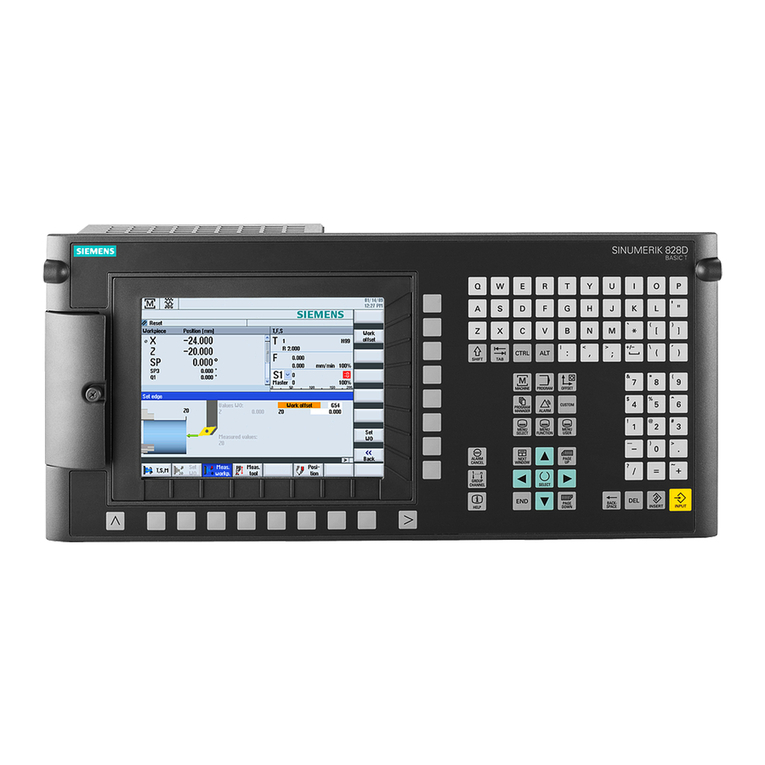
Siemens
Siemens SINUMERIK 828D Turning Service manual
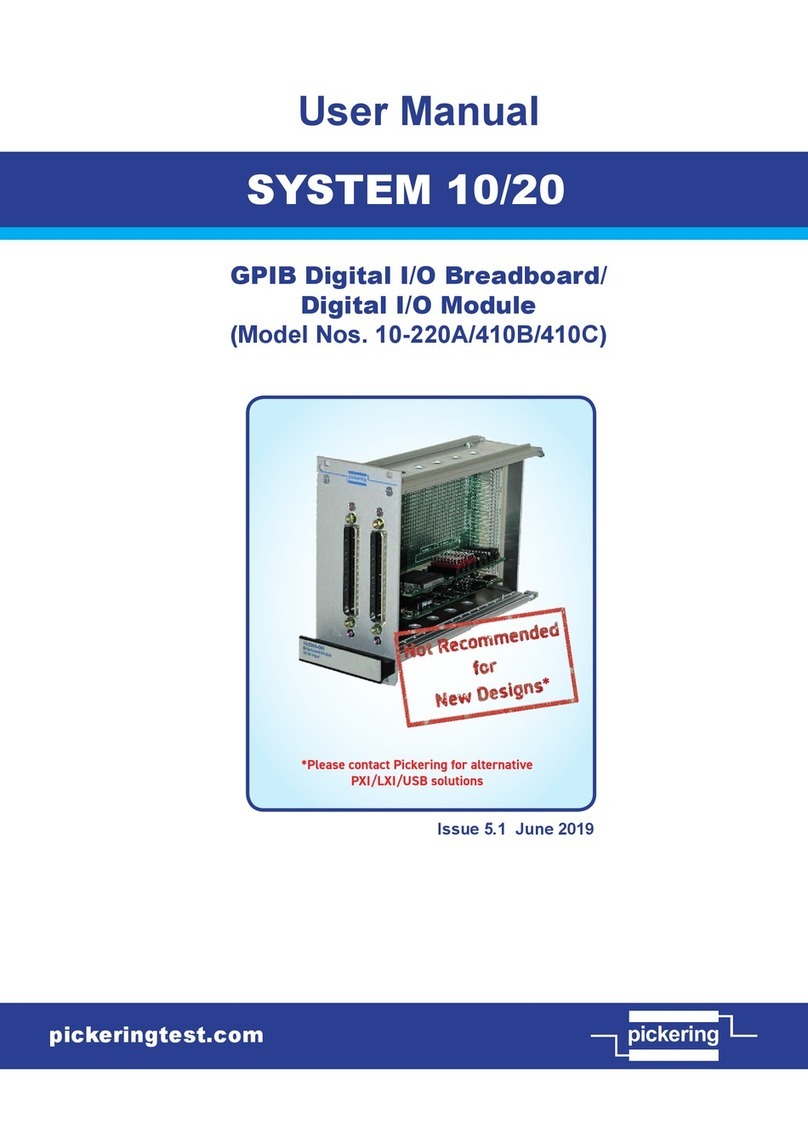
Pickering
Pickering SYSTEM 10 user manual
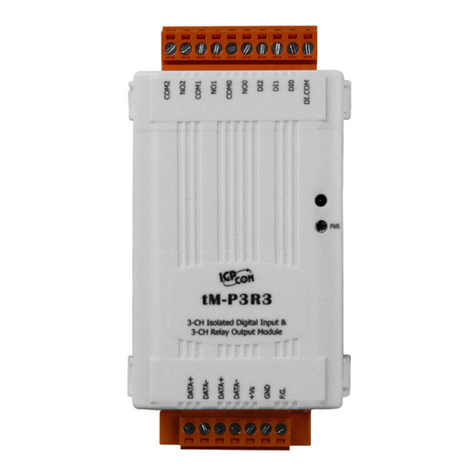
ICP DAS USA
ICP DAS USA tM-P3R3 quick start guide
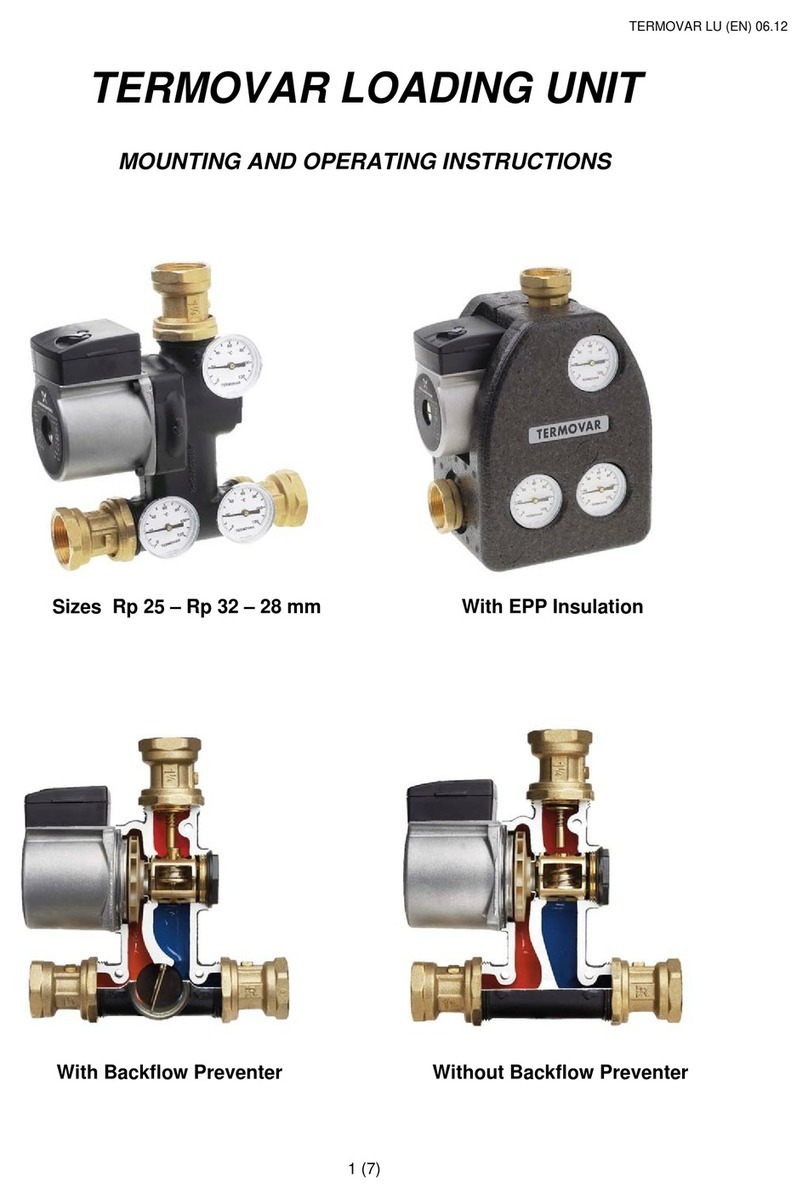
Vexve
Vexve TERMOVAR Series Mounting and operating instructions

Ross
Ross HDBH Series operating instructions

Viessmann
Viessmann VITOSOLIC 100 operating instructions
